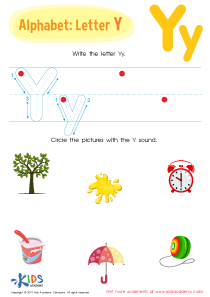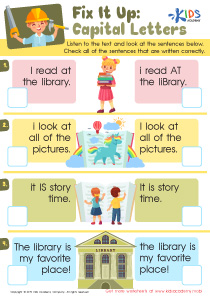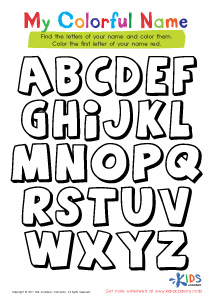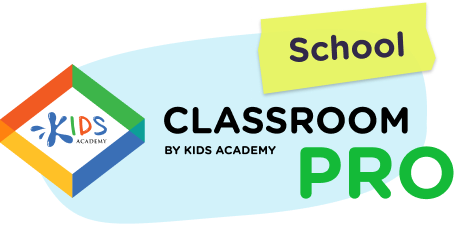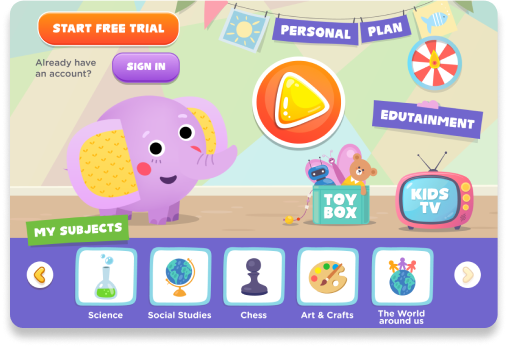Handwriting practice Kindergarten Tracing Letters Worksheets - Page 2
28 filtered results
-
From - To
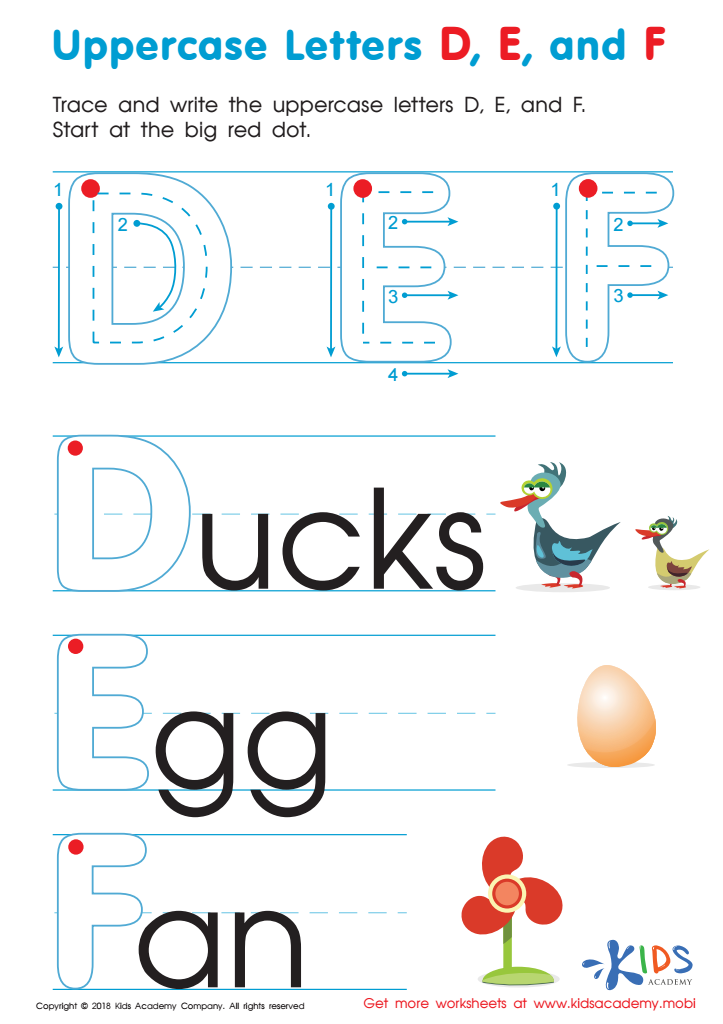

Uppercase Letters D, E, and F Worksheet
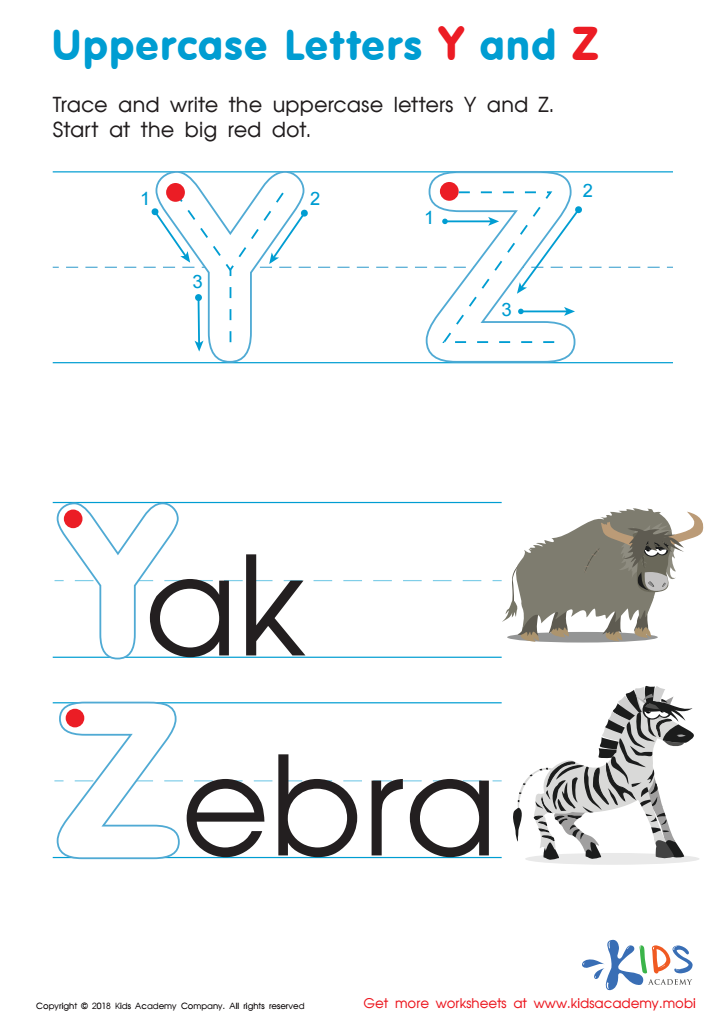

Uppercase Letters Y Z Worksheet
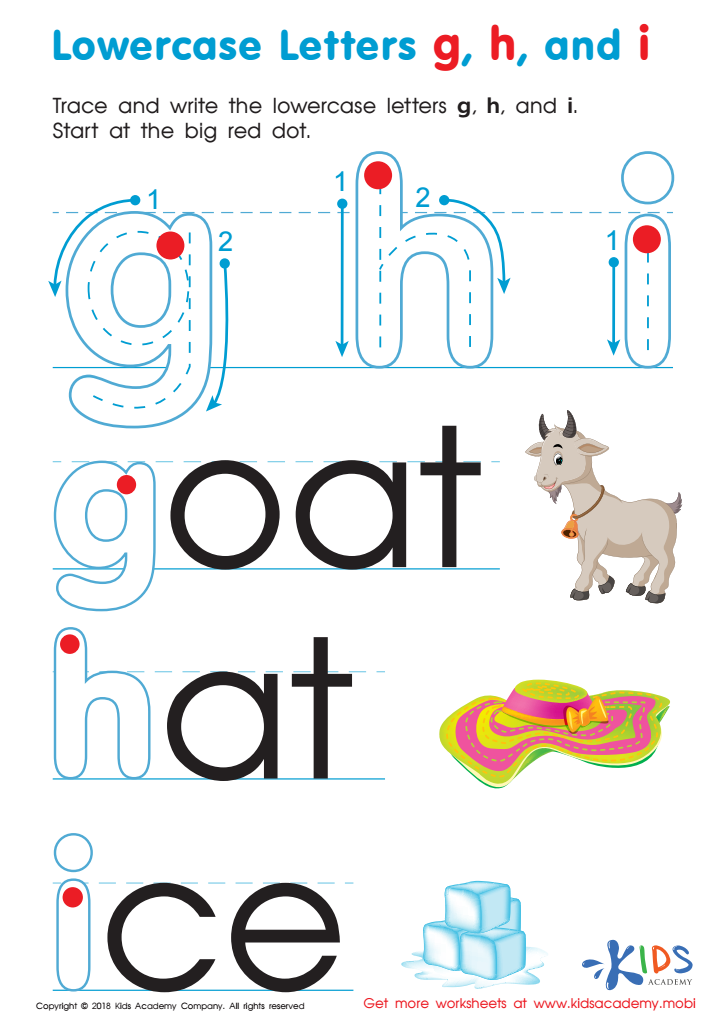

Lowercase Letters g h i Worksheet
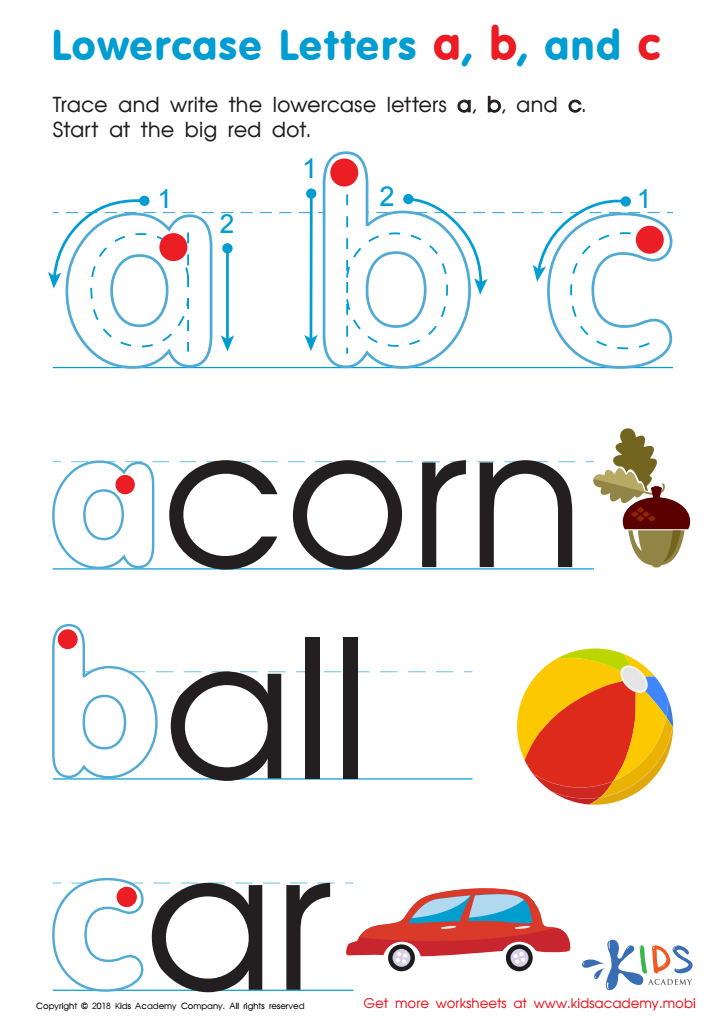

Lowercase Letters a b c Worksheet
Handwriting practice, particularly through tracing letters in kindergarten, is crucial for early childhood development. Firstly, it promotes fine motor skills, which are essential for more complex tasks later in life, like writing and typing. By tracing letters, children enhance their hand-eye coordination and learn how to control their writing instruments effectively.
Secondly, handwriting practice reinforces cognitive skills. As children trace letters, they not only recognize shapes but also associate them with sounds, facilitating phonemic awareness. This connection between writing and phonics is foundational for reading and language development.
Moreover, handwriting practice can boost a child's self-esteem. As they progress from tracing to forming letters independently, they experience a sense of accomplishment. This positive reinforcement encourages further learning and exploration.
Finally, in an increasingly digital world, the ability to write legibly remains crucial. Handwriting has been linked to stronger retention of information; handwriting something engages the brain differently than typing, fostering better understanding and memory.
In summary, parents and teachers should prioritize handwriting practice in kindergarten to support fine motor skills, cognitive associations, self-esteem, and long-term academic success, laying a solid foundation for a child’s future education.
 Assign to My Students
Assign to My Students






